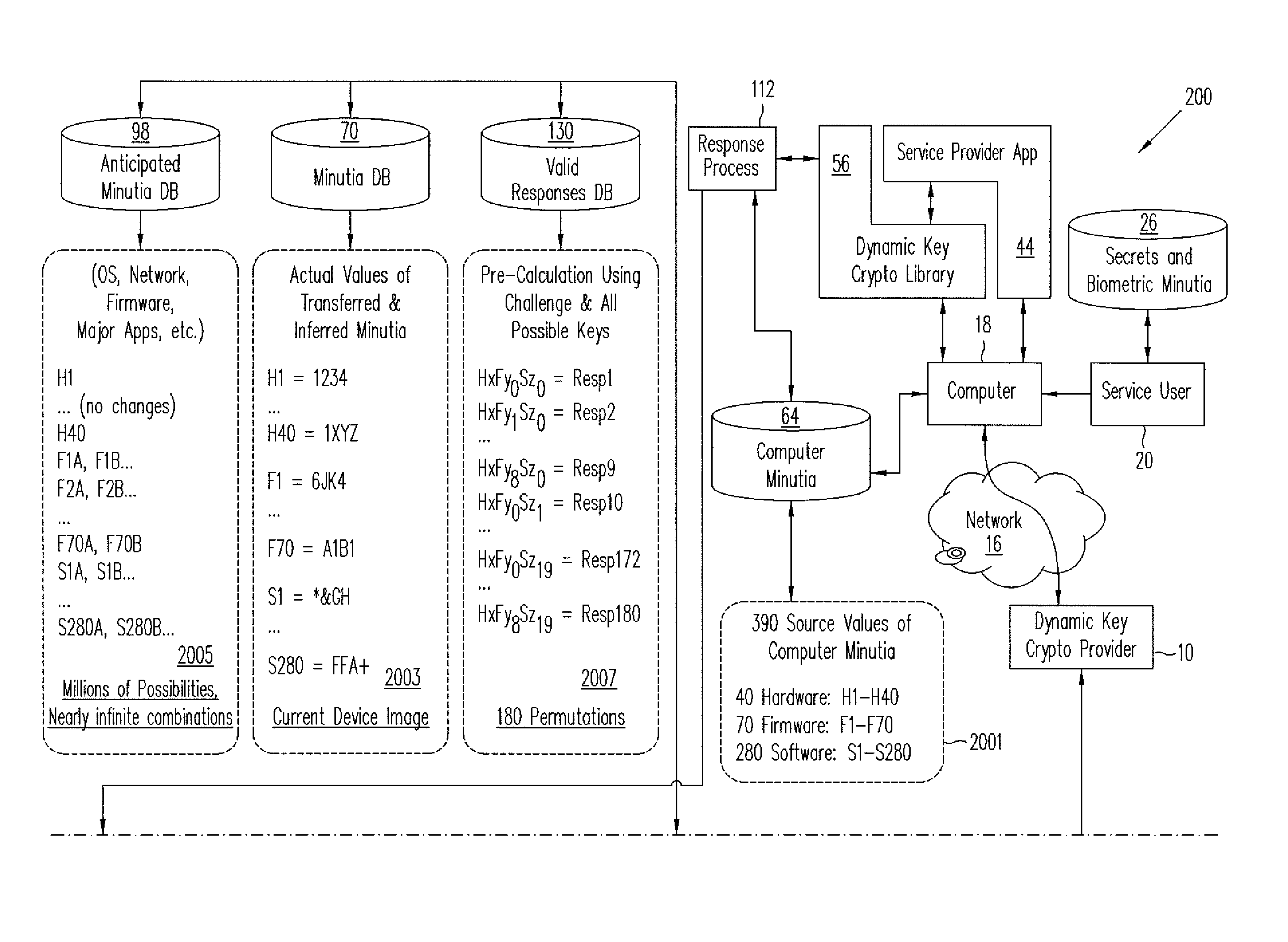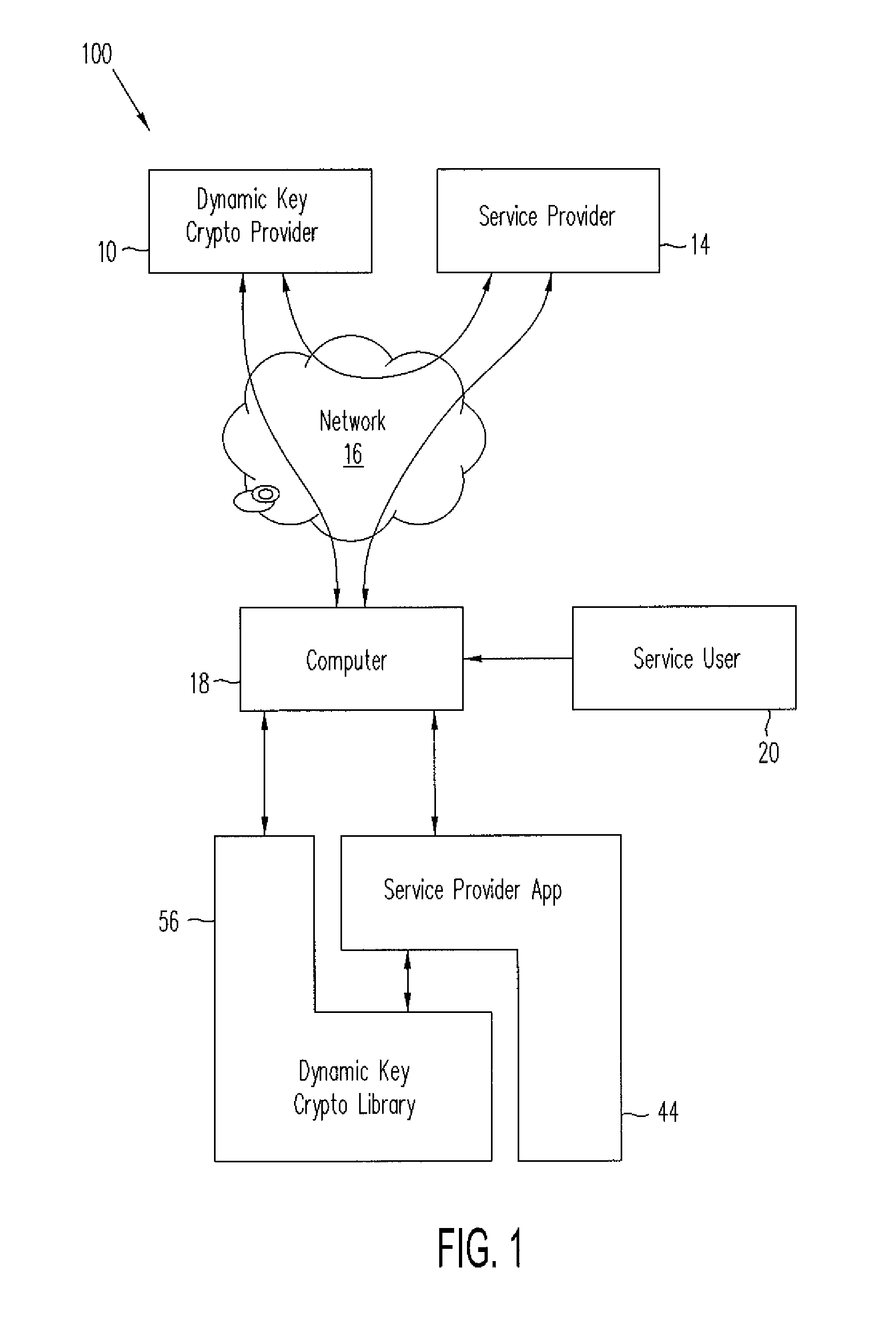Cryptographic security functions based on anticipated changes in dynamic minutiae
a cryptography and dynamic minutia technology, applied in the field of dynamic key cryptography, can solve the problems of difficult security of cryptographic keys distributed and stored on clients computers, risk to the privacy of many types of information belonging to users, and the risk of mobile users especially
- Summary
- Abstract
- Description
- Claims
- Application Information
AI Technical Summary
Benefits of technology
Problems solved by technology
Method used
Image
Examples
Embodiment Construction
[0026]In accordance with embodiments of the present invention, methods and systems of dynamic key cryptography using dynamically changing keys composed of or derived from dynamically changing key material provide cryptographic services such as authentication, data protection, and digital signature by uniquely identifying a user's computer or other electronic device based on (1) the electronic device itself, e.g., a mobile phone or personal computing device, and using a very wide range of hardware, firmware, and software minutia found on the computer; (2) secrets a user of the computer knows; and (3) biometric information the computer might collect from the user. Dynamic key cryptography in accordance with one or more embodiments enables secured actions for users of electronic computers and, more particularly, provides authentication between a client electronic computer and a service provider, encryption of data electronically stored or sent on a communication channel, and digital si...
PUM
 Login to View More
Login to View More Abstract
Description
Claims
Application Information
 Login to View More
Login to View More - R&D
- Intellectual Property
- Life Sciences
- Materials
- Tech Scout
- Unparalleled Data Quality
- Higher Quality Content
- 60% Fewer Hallucinations
Browse by: Latest US Patents, China's latest patents, Technical Efficacy Thesaurus, Application Domain, Technology Topic, Popular Technical Reports.
© 2025 PatSnap. All rights reserved.Legal|Privacy policy|Modern Slavery Act Transparency Statement|Sitemap|About US| Contact US: help@patsnap.com



